
Phanteks has unveiled its latest all-in-one water cooling system, taking a departure from the intricate designs of its earlier infinity mirror cooling heads. Instead, the new design showcases a minimalist style with RGB light strips. One significant enhancement is the reduced size of the water cooling head, ensuring better compatibility with various builds. Paired with the recently introduced D30-120 quick-release bridge fan, it promises not only a superior cooling performance but also ease of installation.
Specifications of Phanteks GLACIER ONE 360 D30:
- Supported CPU Sockets: Intel LGA 1700/1200/115X/2011/2066, AMD AM5/AM4
- Available Colors: Black and White
- Pump Speed: Up to 3100RPM
- Fan Dimensions: 120 x 120 x 30 mm
- Noise Level: 30.2 dBA
- Max Airflow: 64.3 CFM
- Peak Air Pressure: 3.01 mmH2O
- Water Tube Length: 400mm
- Cooling Radiator Dimensions: 397 x 120 x 27 mm
- Materials Used:
- Water block: Copper
- Radiator: Aluminum
- Tubes: Rubber
- Warranty Period: 5 years
ARGB, 30mm Thickness, quick-release bridge design | Phanteks GLACIER ONE 360 D30 unpacking
The Phanteks GLACIER ONE D30 series water cooling lineup boasts four distinct styles, with options for both 240mm and 360mm radiator sizes. Both sizes are available in classic black or pristine white. When compared to its predecessor, significant changes can be noted in the design of the water-cooling headshell. It has been notably reduced in size and transitioned to a fixed, non-detachable design, thereby minimizing potential conflicts with motherboard heatsinks or RAM modules. Yet, despite these modifications, the water pump’s speed remains a powerful 3100RPM, and the cooling radiator employs a standard 27mm thick aluminum fin.
Previously, the D30-120 fan was unveiled by another reviewer. It’s a 12cm fan, uniquely designed with a 30mm thickness. One of its standout features is the ease of connecting multiple fans. The design employs metal pins and contacts to power both the fan and its lights. This clever design approach minimizes cable clutter, optimizing both functionality and aesthetics.
The unboxed Phanteks GLACIER ONE 360 D30 showcased in this review is in a sleek black variant. The packaging echoes this theme, with black dominating the exterior box. It prominently features an image of the radiator in the center, while the inside retains a more traditional kraft paper box packaging.
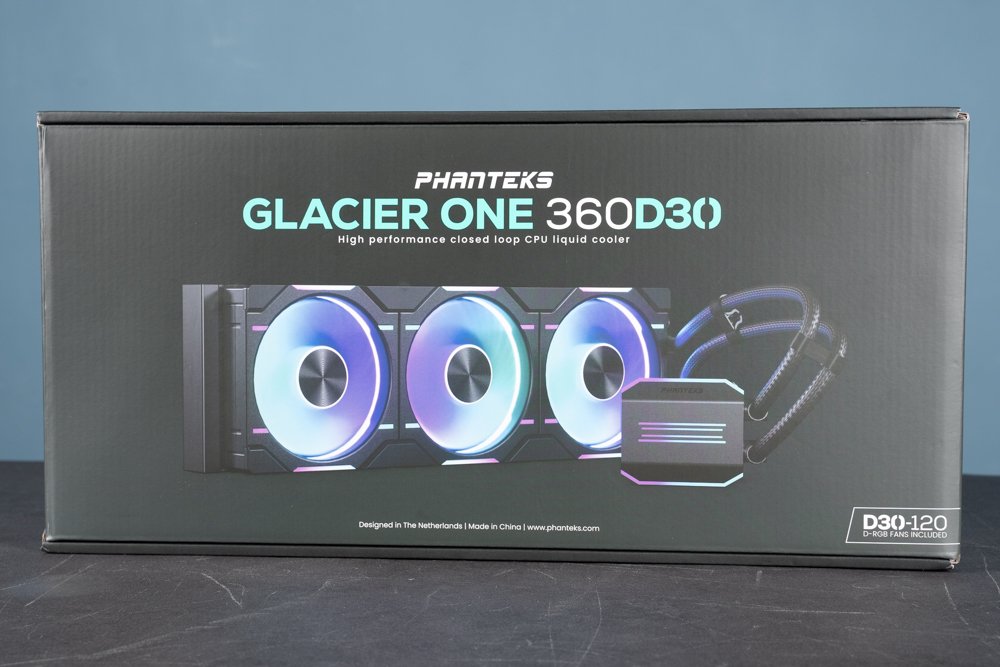
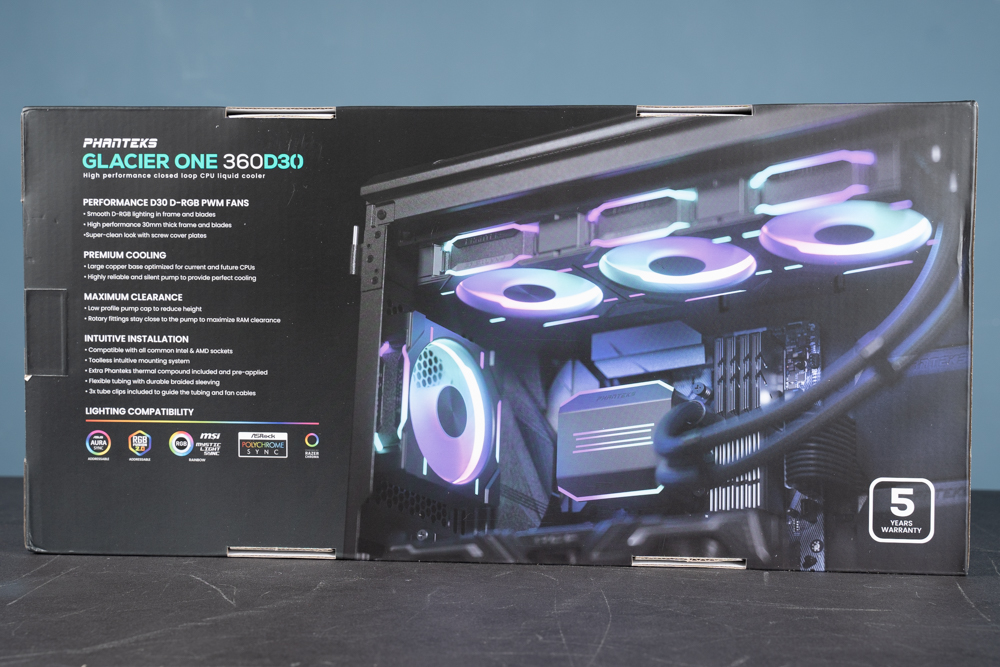
The Phanteks GLACIER ONE 360 D30 features a unified design that integrates the water pump and cooling head. Its top cover is both non-removable and non-rotatable. This design choice eliminates concerns about incorrectly aligning or inverting any patterns during installation, especially since the pattern and the Phanteks LOGO on the top cover are vertically symmetrical.
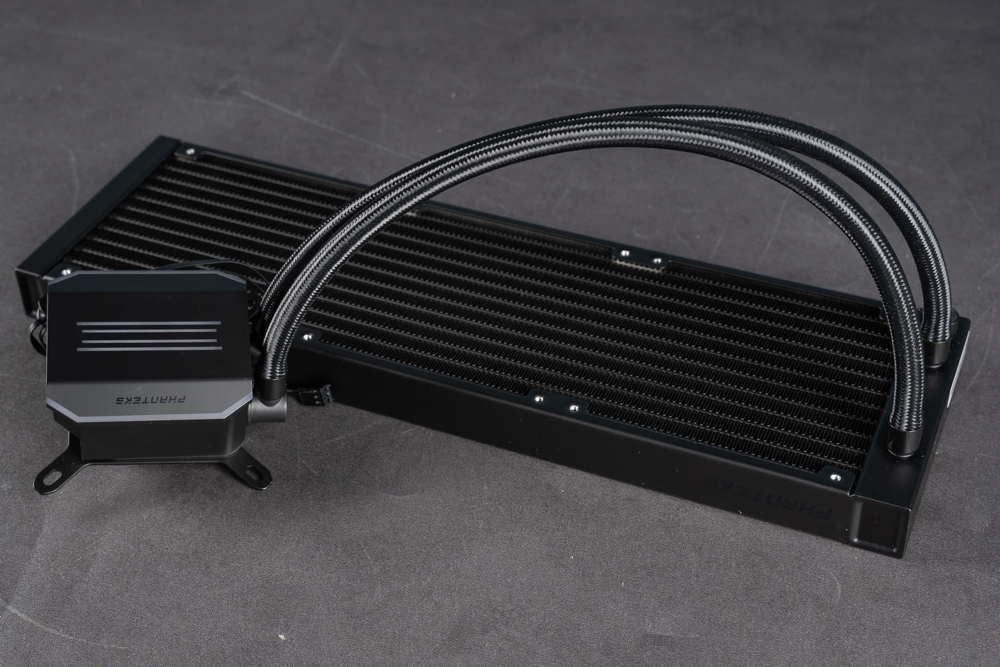
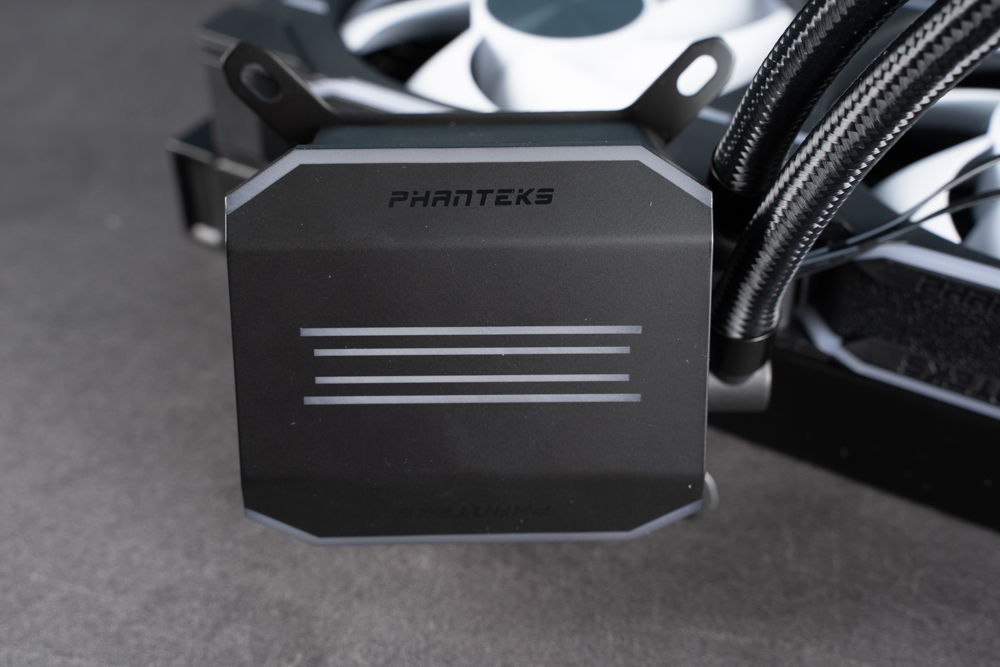
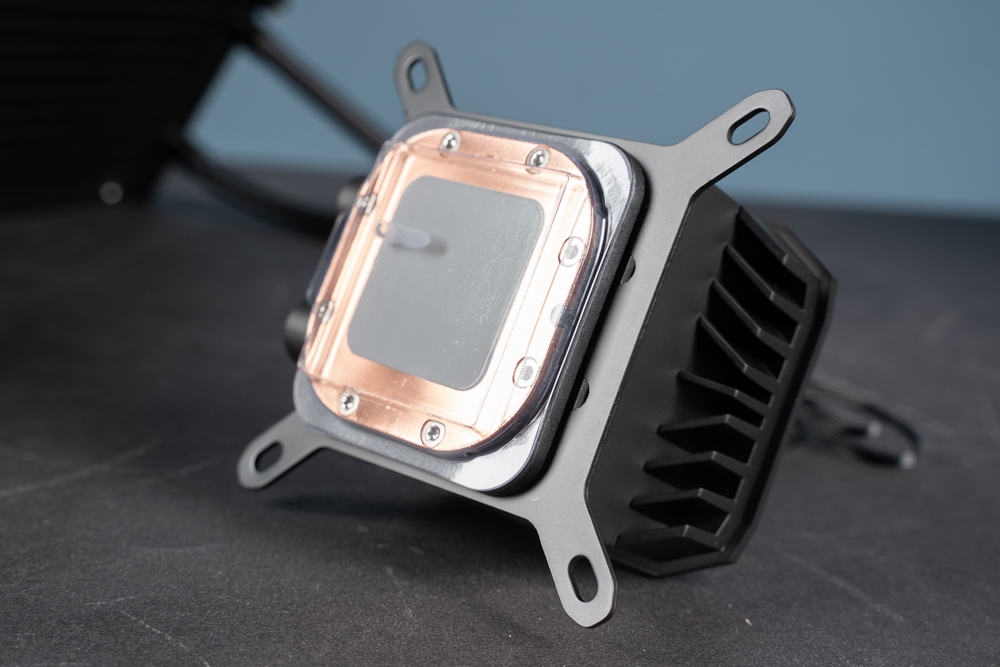
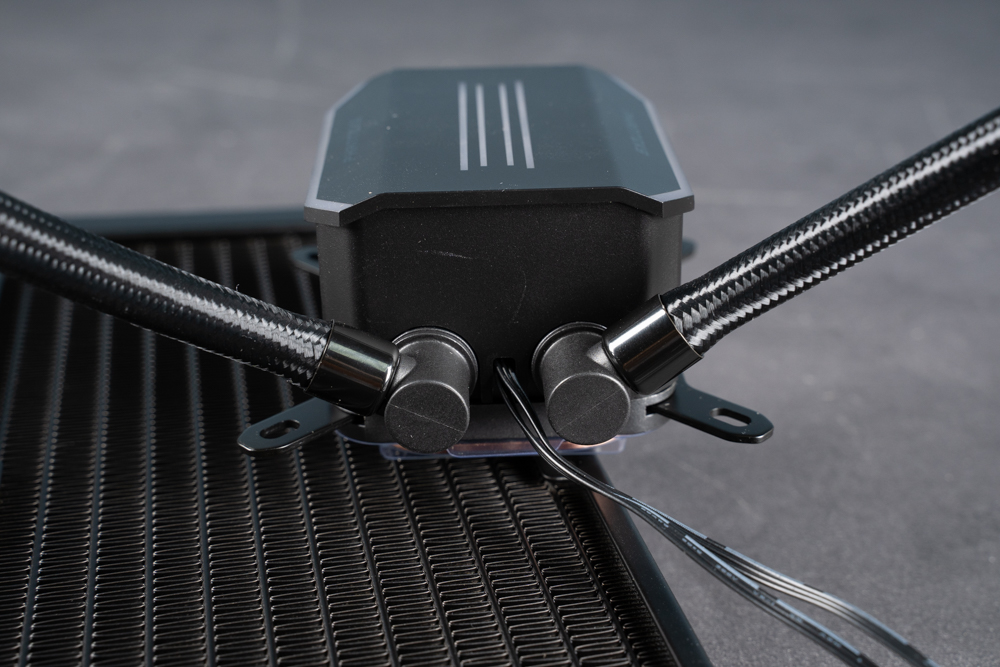
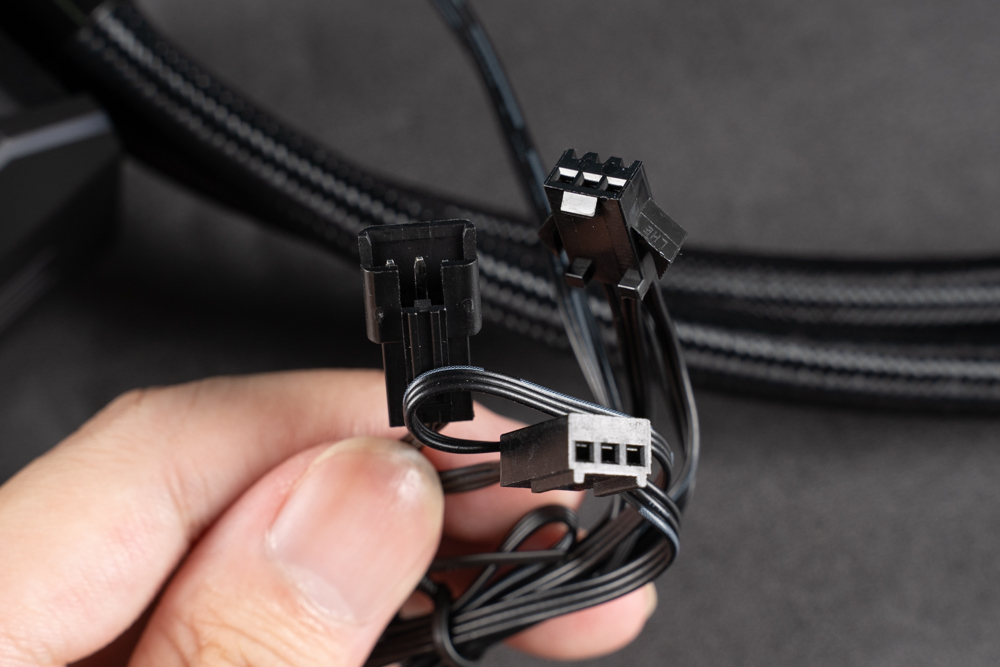
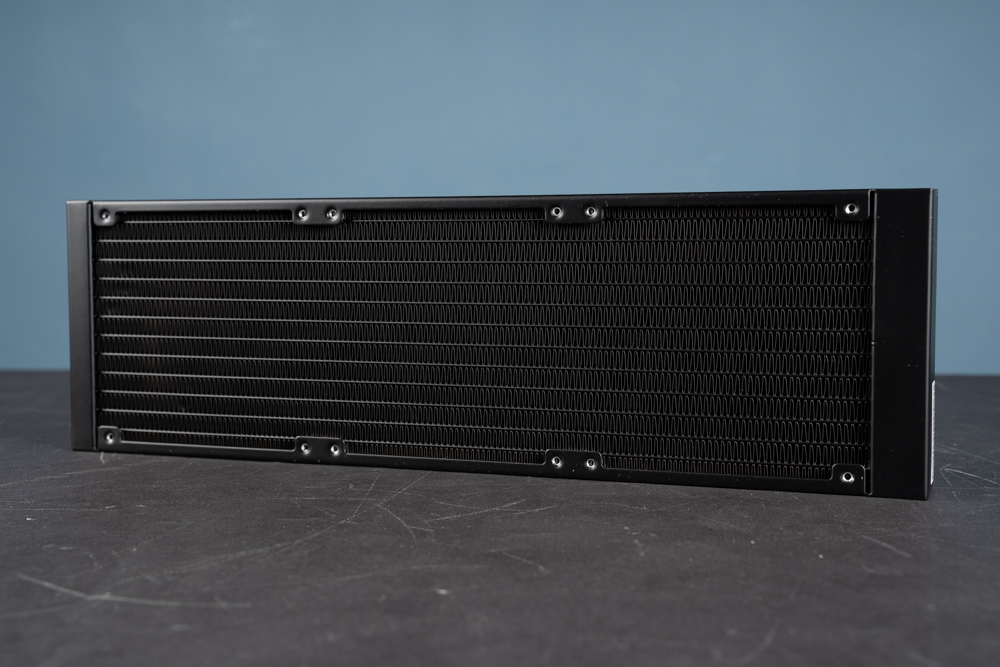
The D30-120 fan sports a thickness of 30mm and boasts a maximum speed of 2000RPM. It uses a 4-pin PWM for speed regulation and features ARGB lighting around the frame. Its design emphasizes a bridge-connection series. Given the plethora of small components that come with it, first-time users are advised to closely follow the installation instructions to ensure a smooth setup.
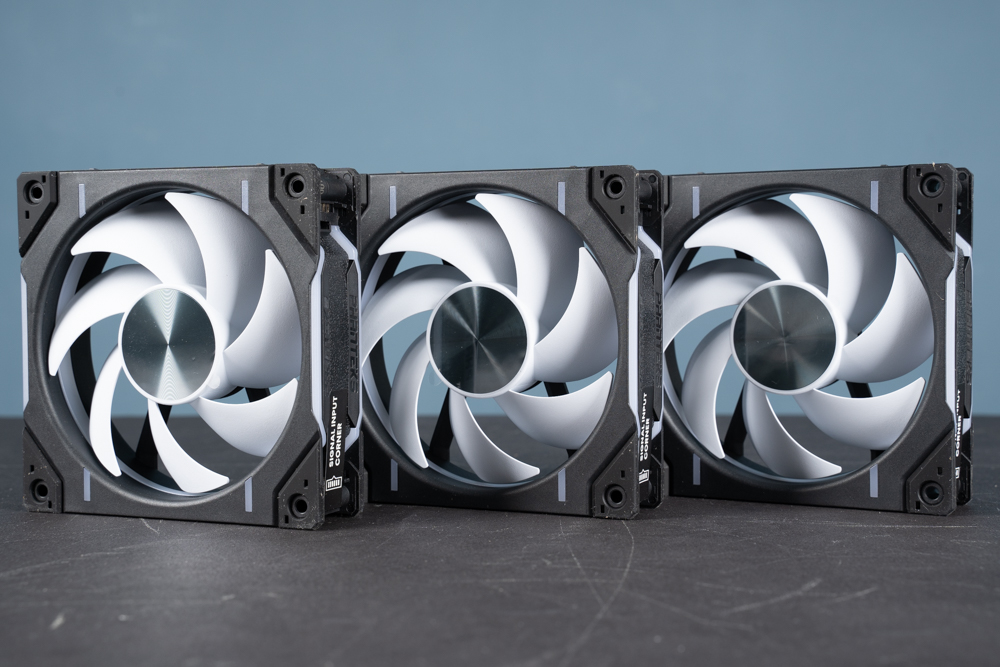
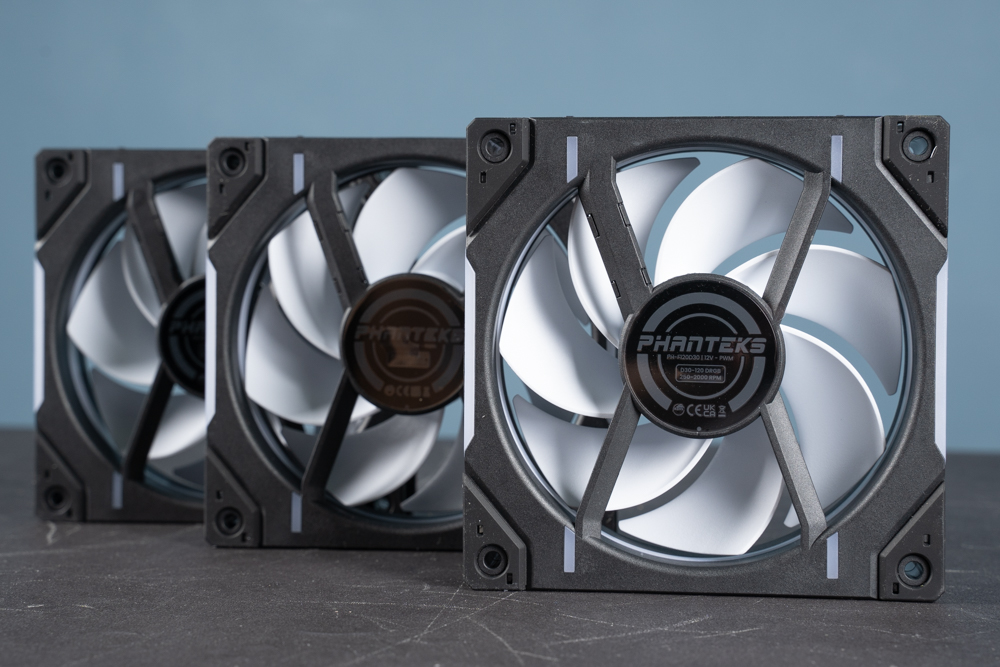
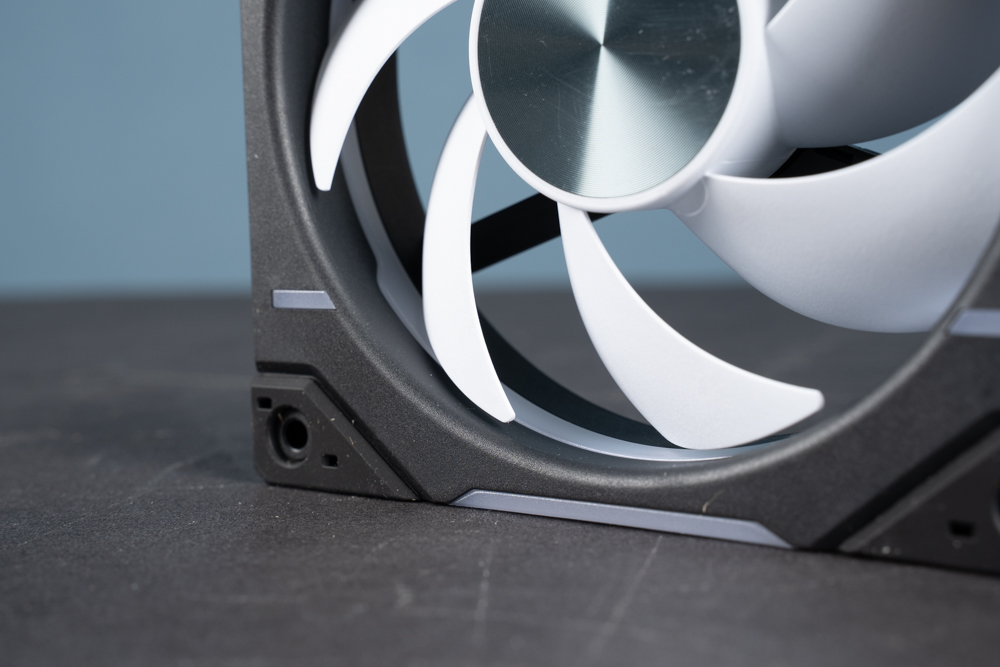
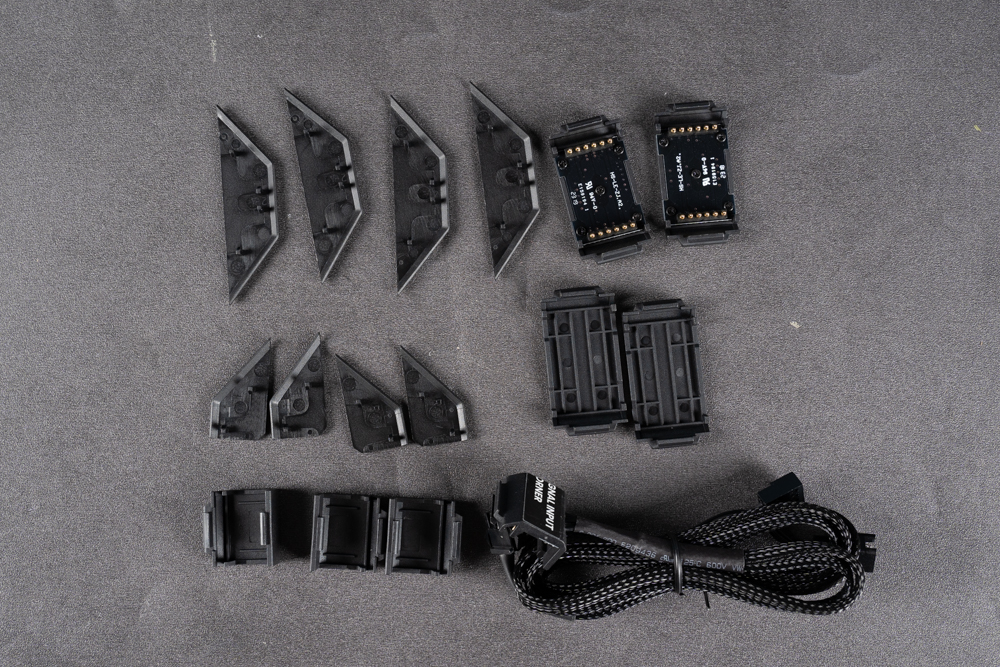
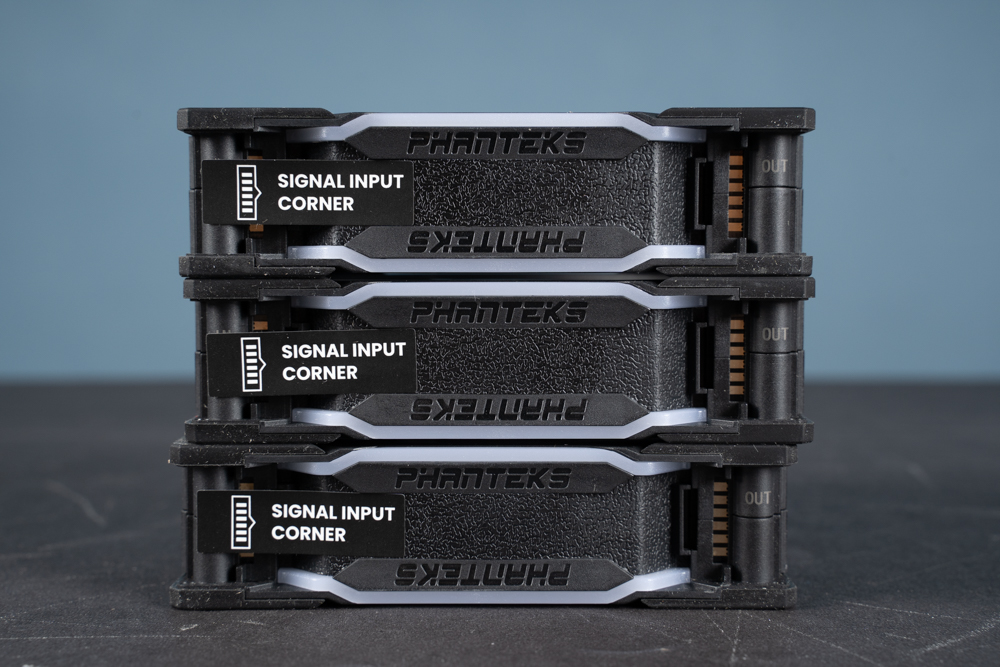
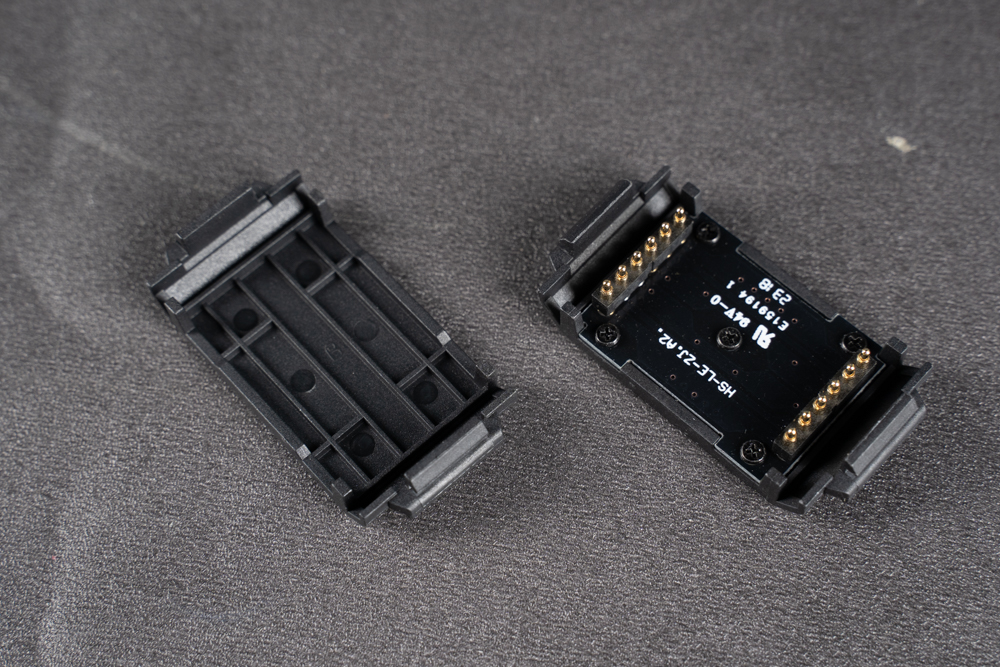
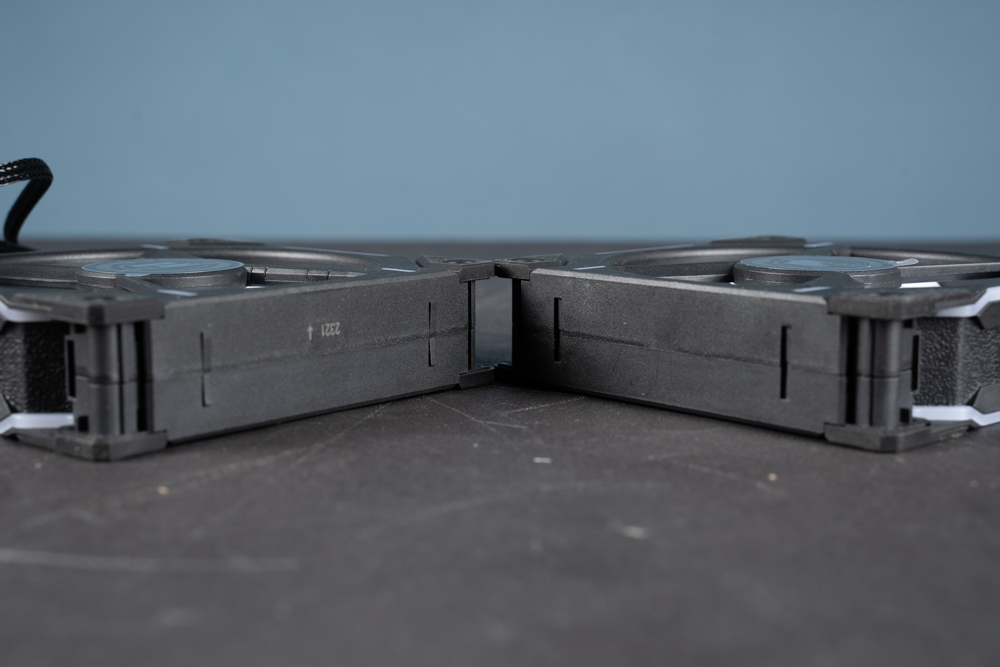
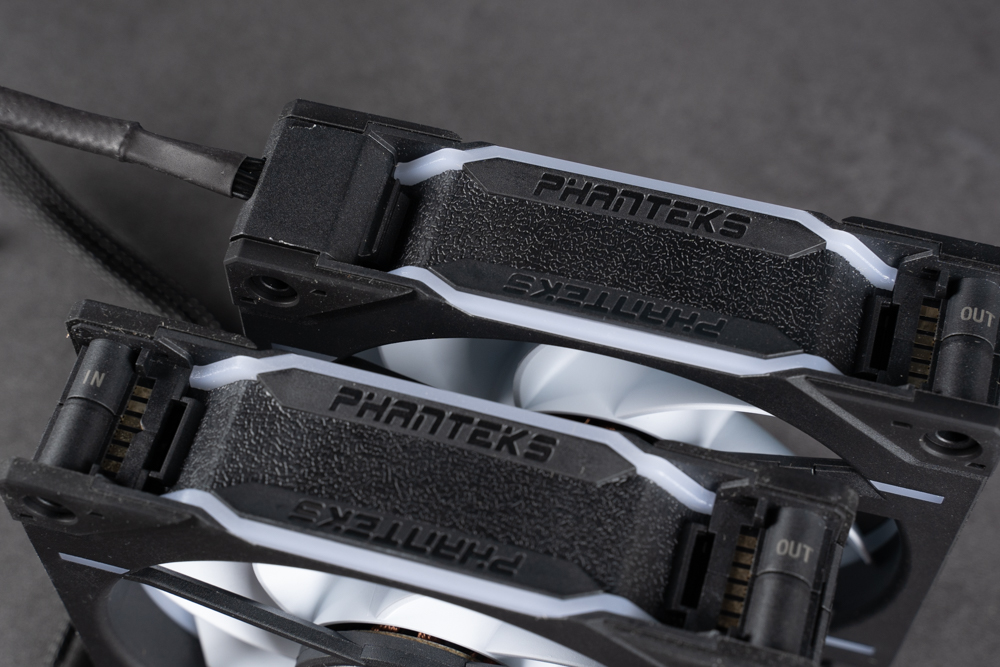
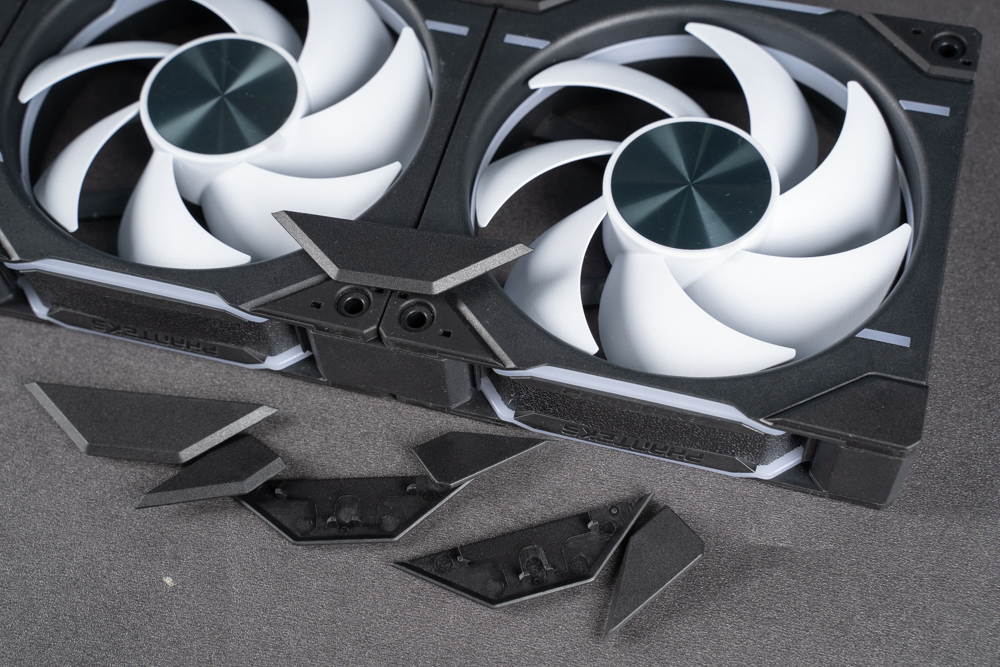
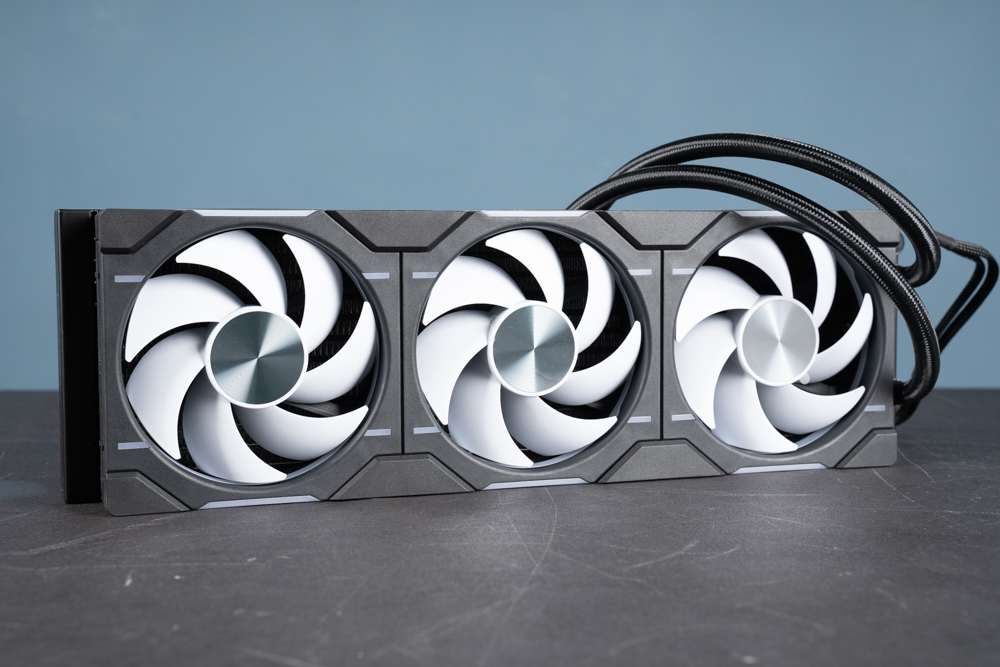
Phanteks GLACIER ONE 360 D30 dual-platform installation demonstration
The Phanteks GLACIER ONE 360 D30 is compatible with a variety of CPU sockets, including Intel’s LGA 115x, 1200, 1700, 2011, 2011-3, and 2066, as well as AMD’s AM4 and AM5. For this review, tests were conducted using the ASUS ROG Strix Z690-E GAMING WIFI and the ASROCK B650E TAICHI motherboards to carry out the installation and measurements.
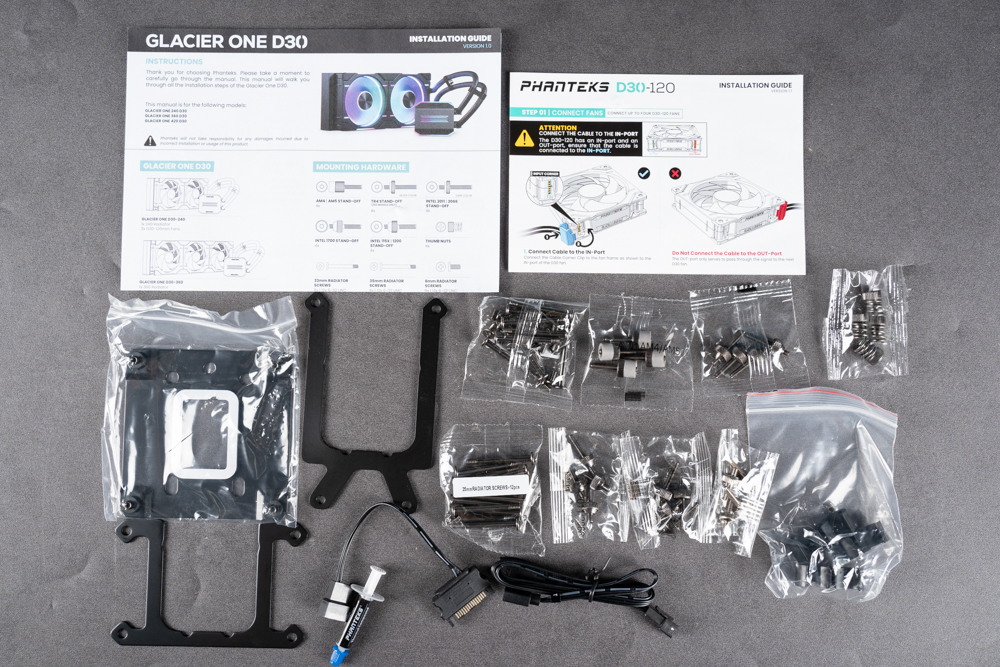
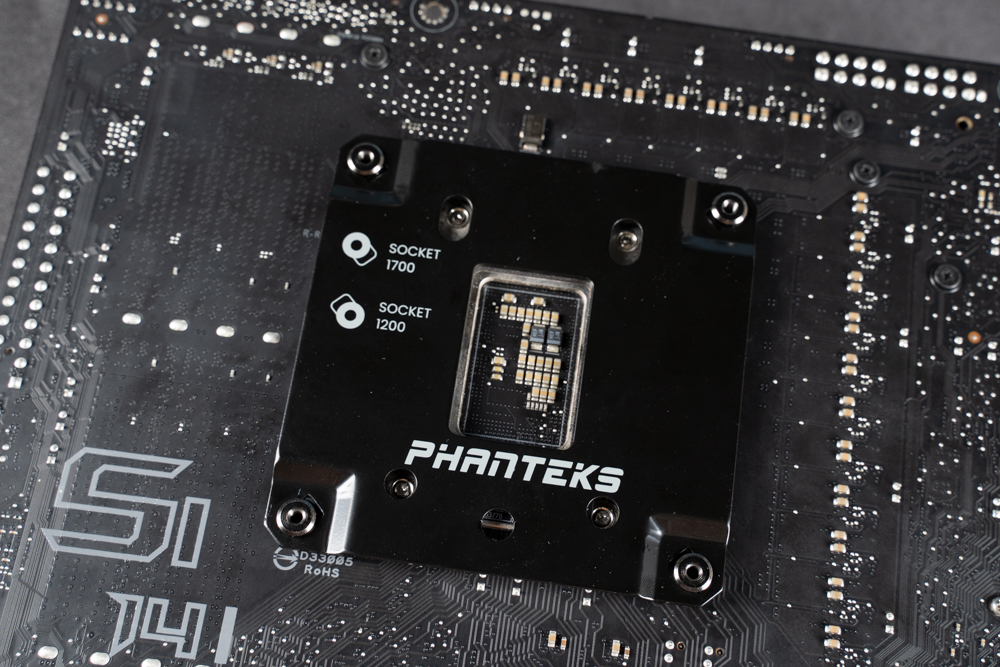
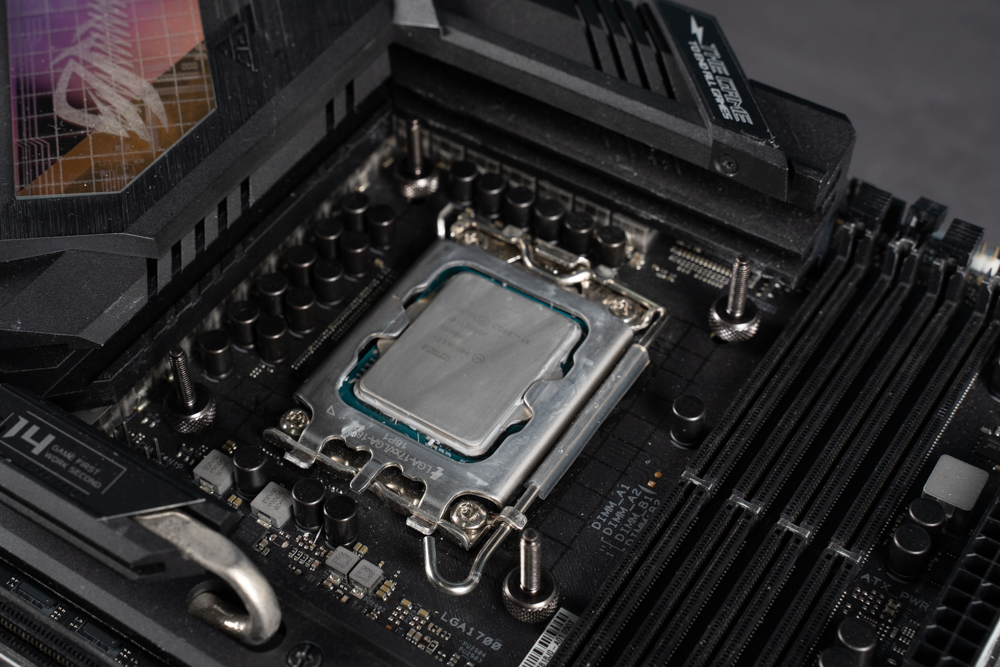
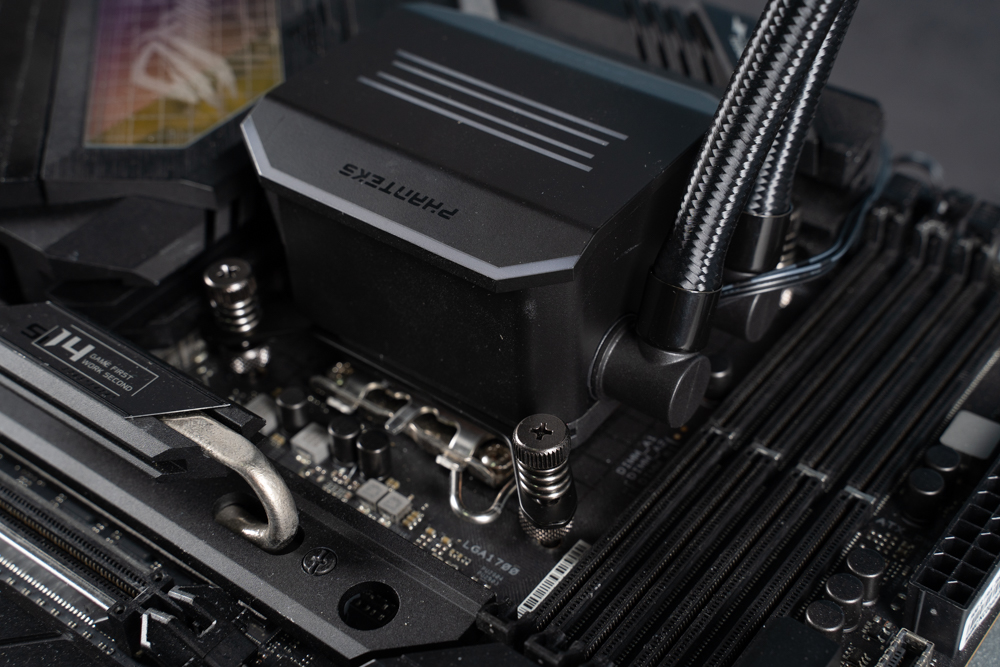
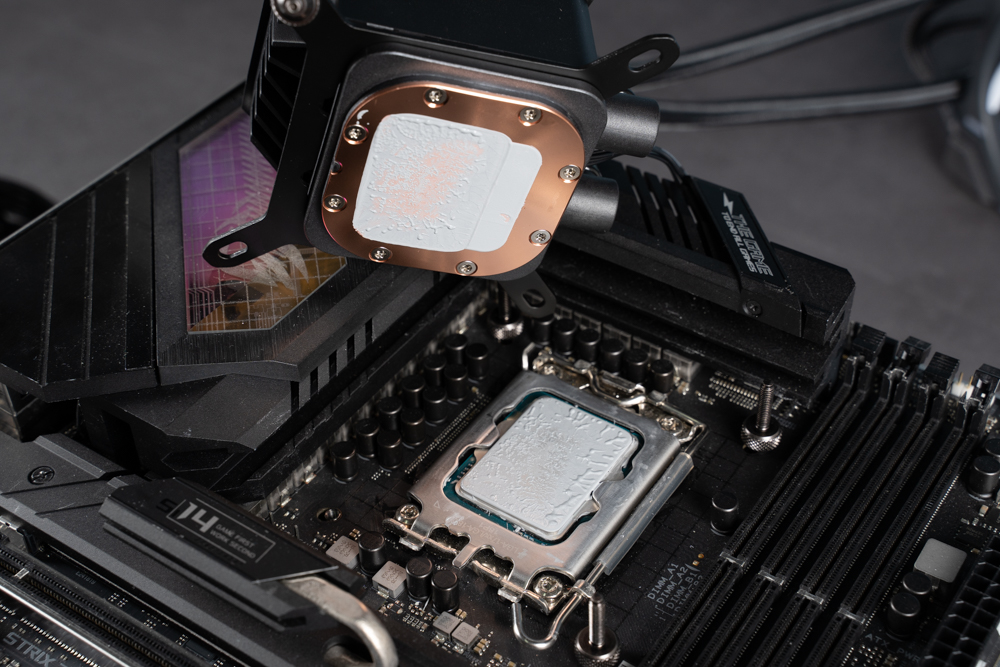
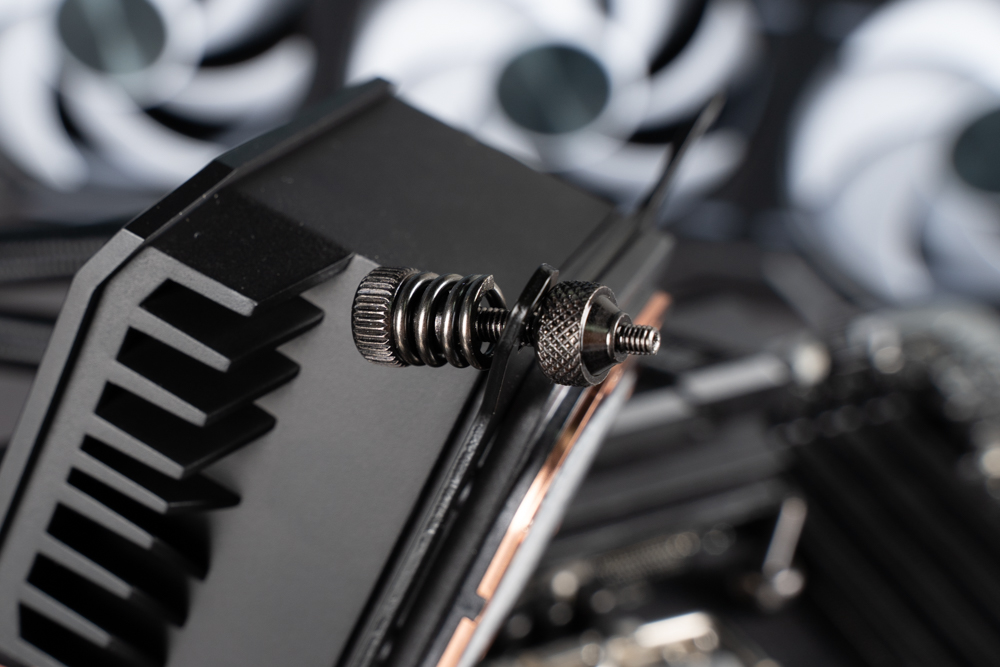
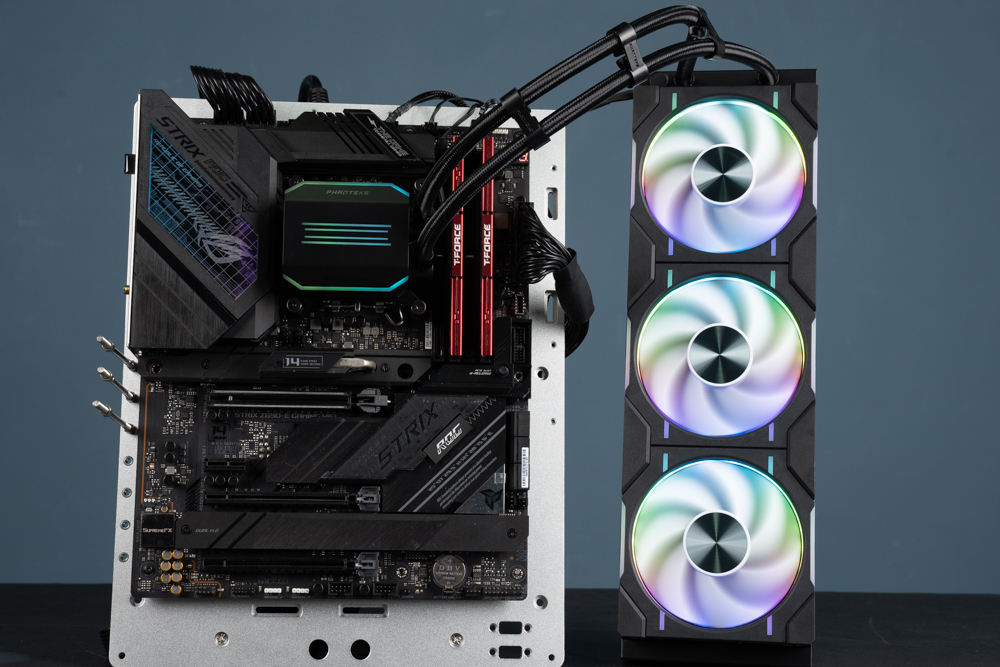
For the AMD platform, users need to utilize the motherboard’s original backplate. Installation involves placing the studs on the front side of the motherboard to securely anchor the backplate in place.
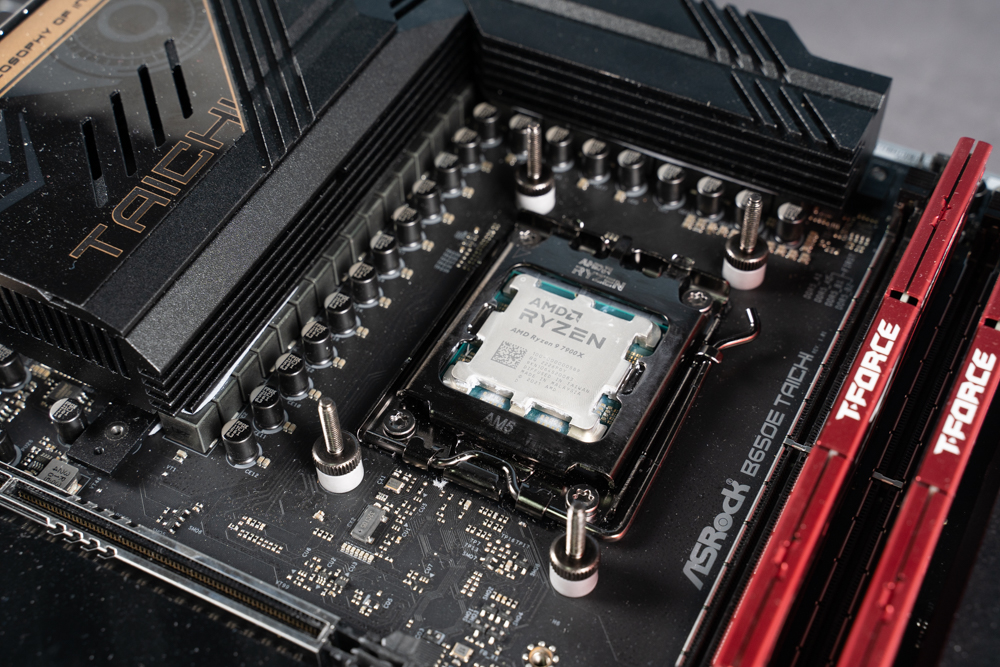
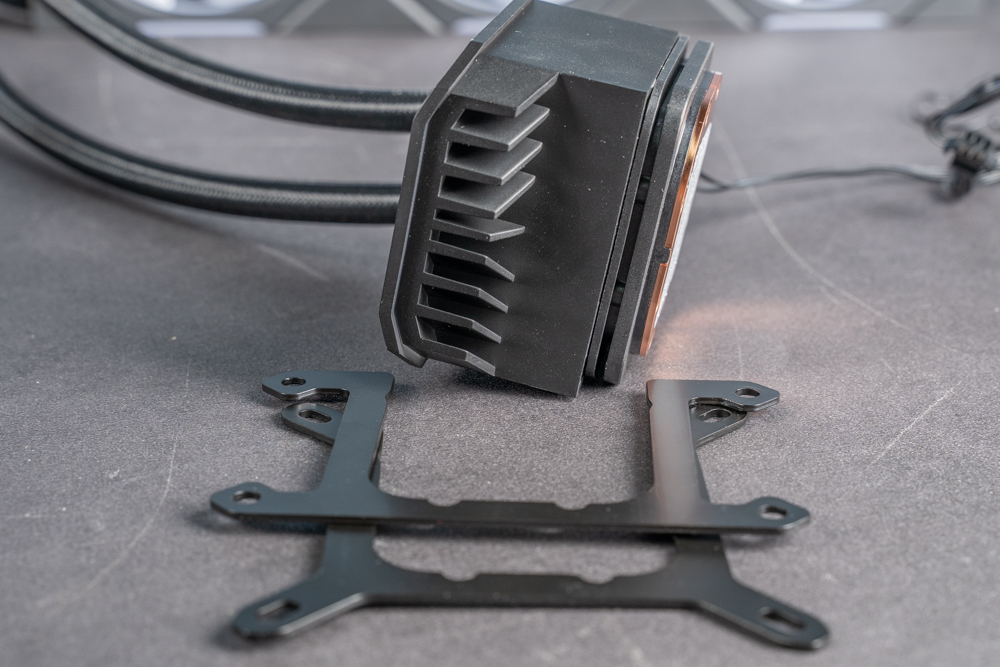
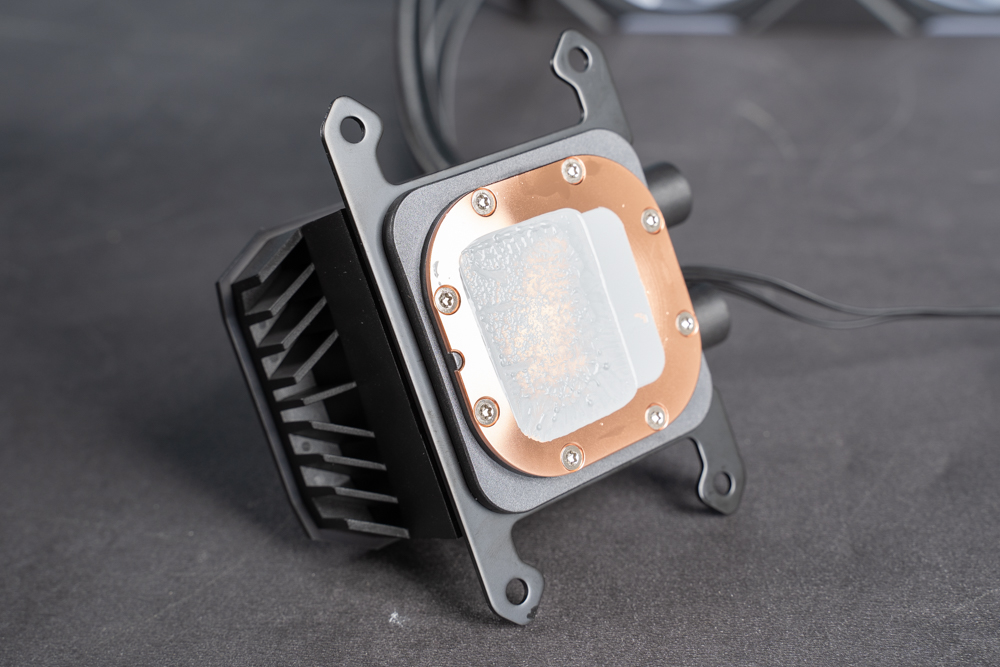
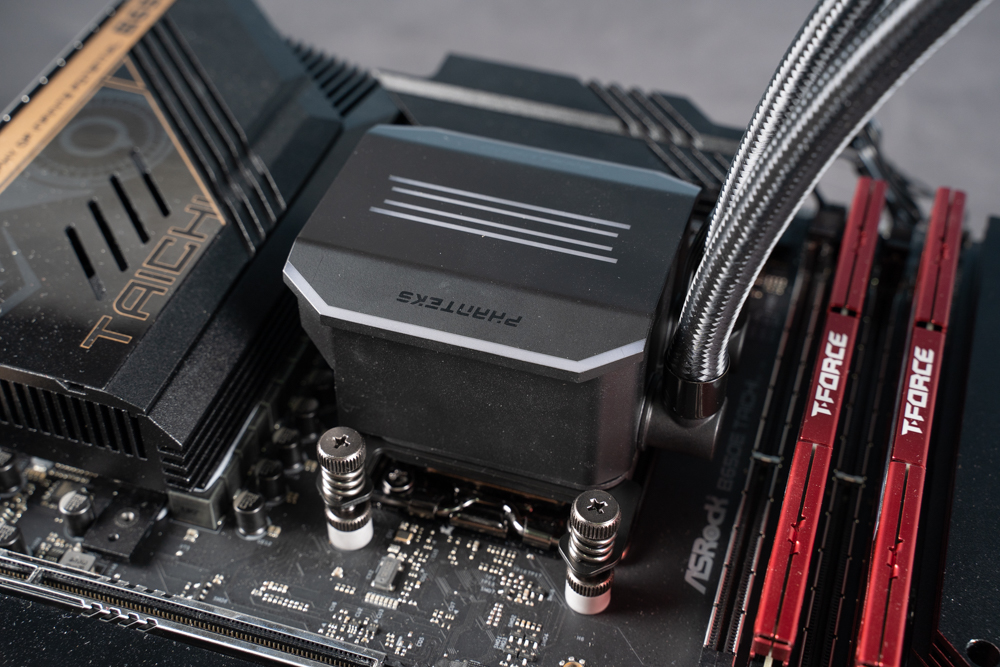
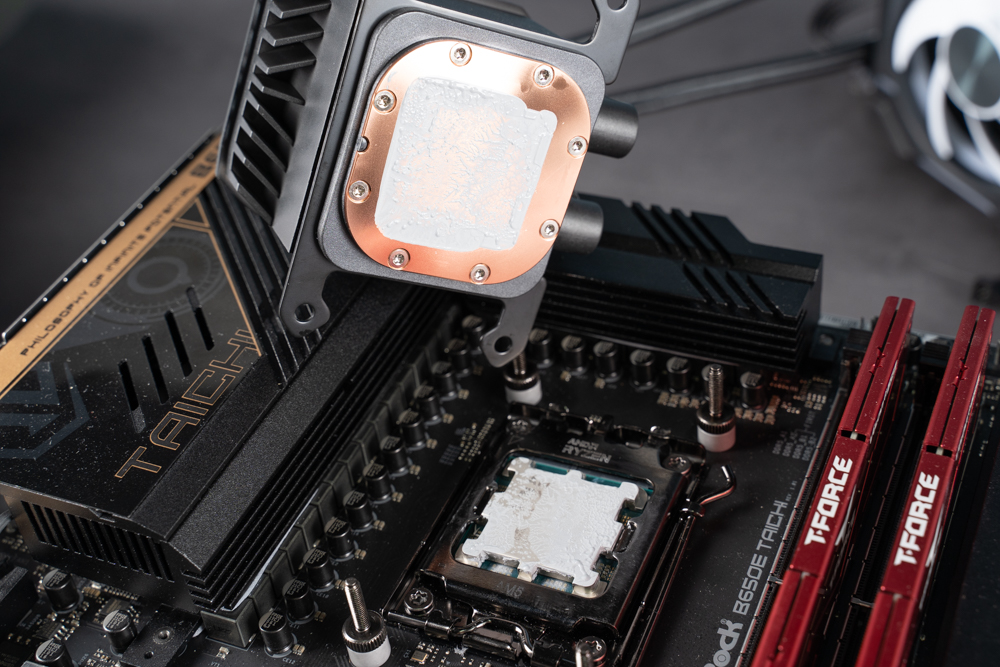
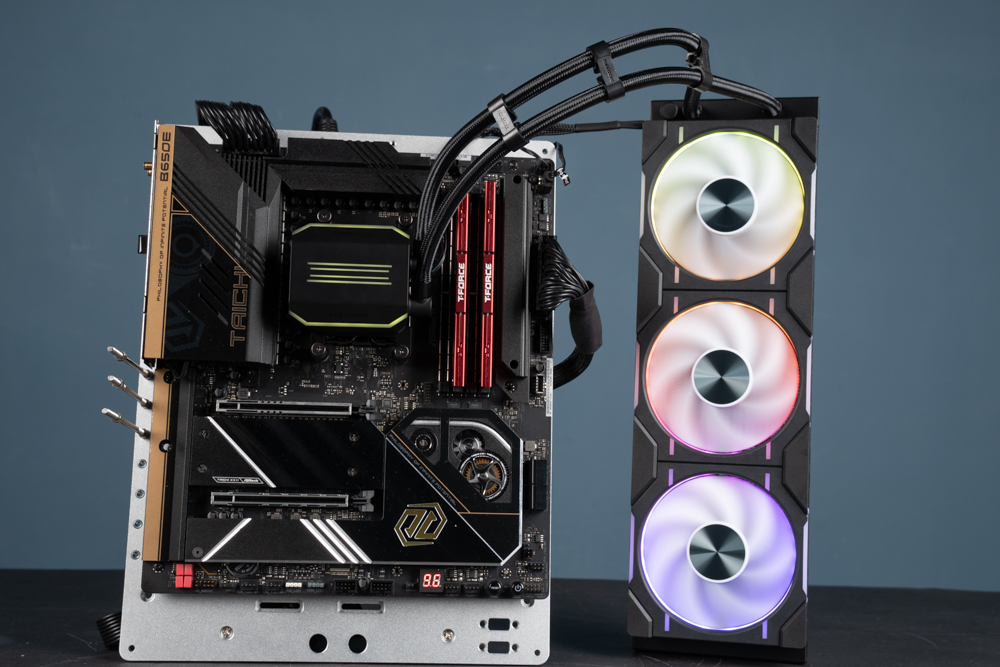
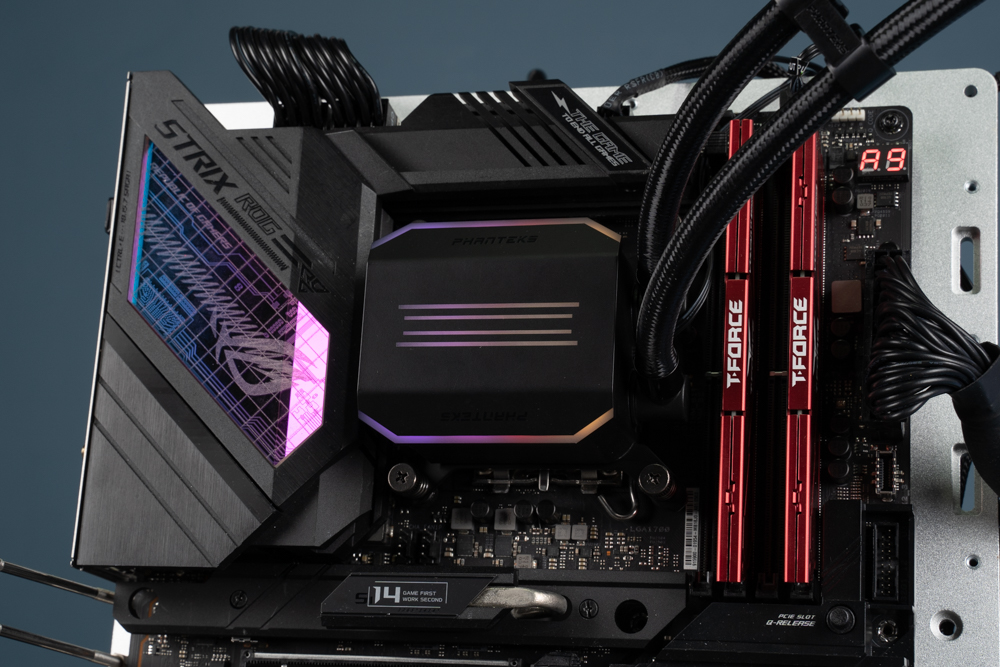
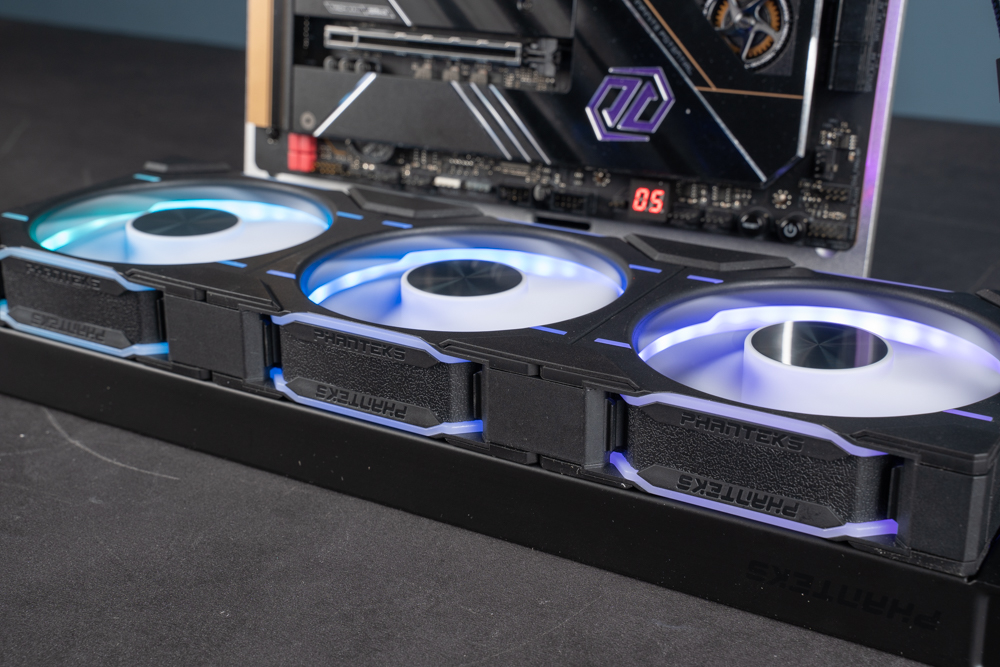
The package includes three sets of pipe clips. These are provided to allow users to more effectively manage the direction of the tubing, ensuring both functionality and a more aesthetically pleasing appearance.
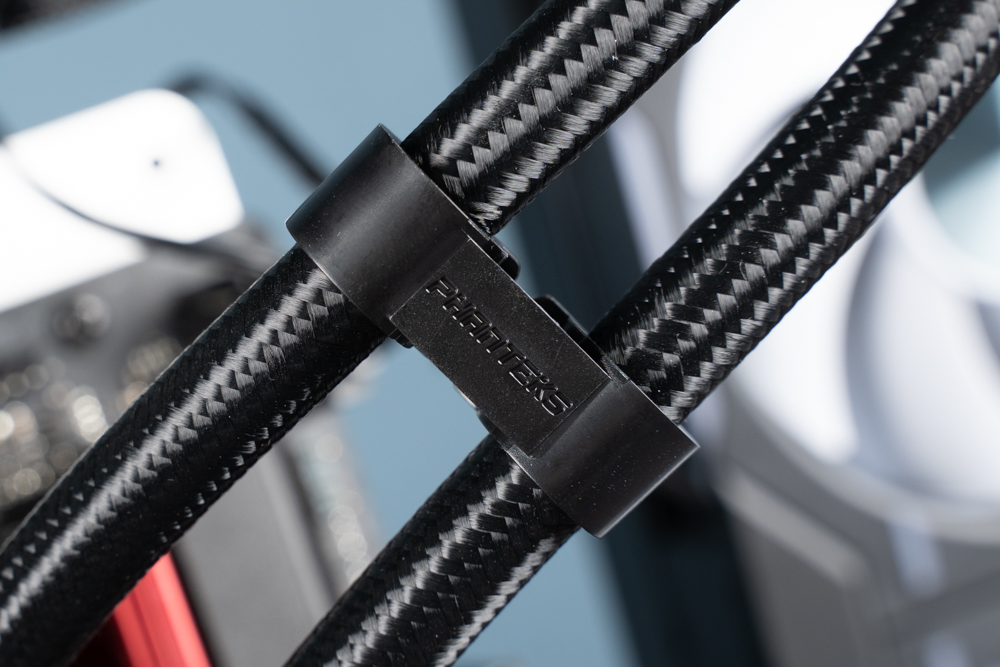
Phanteks GLACIER ONE 360 D30 dual-platform heat dissipation test
In this assessment, the top-tier consumer-grade processors, Intel i9-13900K and AMD RYZEN 9 7950X, were put to the test for temperature evaluations. Here’s a breakdown of the testing process and findings:
Test Setup and Procedures:
- Intel Platform Settings:
- Enable XMP
- Disable power consumption limit
- Adjust CPU Load-Line Calibration to LV.1 (originally set at LV.3)
- AIDA64 FPU performance measurement set to Lv.2, given that the default power consumption at Lv.3 peaks at 322W, which most cooling systems struggle to handle. Adjusting this setting makes the resulting data more comparative.
- The AMD platform used the default settings and enabled PBO.
- Benchmark & Testing:
- Utilized AIDA64 FPU to emulate the utmost temperature conditions.
- AIDA64 CPU test to mimic typical daily load temperatures.
- 3DMark Time Spy for game load temperature simulations.
- Ran the Cyberpunk 2077 benchmark test to represent real game temperature conditions.
- Employed HWiNFO64 to log the average temperature over a ten-minute duration.
Test System Configurations:
Intel Test Platform:
- Processor: Intel Core i9-13900K
- Motherboard: ASUS ROG Strix Z690-E GAMING WIFI
- GPU: Nvidia GeForce RTX 3070 8G
- RAM: T-Force DDR5-5600 8GBx2
- OS: Windows 11 Professional Edition 21H2
- PSU: FSP Hydro Ti 1000W
AMD Test Platform:
- Processor: AMD RYZEN 9 7950X
- Motherboard: ASROCK B650E TAICHI
- GPU: Nvidia GeForce RTX 3070 8G
- RAM: T-Force DDR5-5600 8GBx2
- OS: Windows 11 Professional Edition 21H2
- PSU: FSP Hydro Ti 1000W
Results:
On the Intel platform, using the Phanteks GLACIER ONE 360 D30, the AIDA64 FPU test kept the i9-13900K at a temperature of 98°C under a power load of 286.9W. This result indicates that this cooler’s peak cooling capacity for the Intel platform stands around 290W. Impressively, the system maintained temperatures below 70°C during regular gaming sessions, attesting to the cooler’s efficiency.
The AMD platform, particularly with the inclusion of PBO (Precision Boost Overdrive), is known to produce high temperatures. However, a useful metric to understand the efficacy of a cooling solution on this platform is by observing the balance between frequency and power consumption, which can be representative of the cooler’s performance.
In the conducted AIDA64 FPU test, the RYZEN 9 7950X maintained a steady 5.0GHz frequency while consuming 215W of power. This indicates that the Phanteks GLACIER ONE 360 D30 cooling solution allows the 7950X to operate at its full potential without thermal throttling. Moreover, under regular, daily operations, the temperature predominantly remains under the 70°C threshold, further showcasing the efficiency of the cooling system on the AMD platform.
Summarize
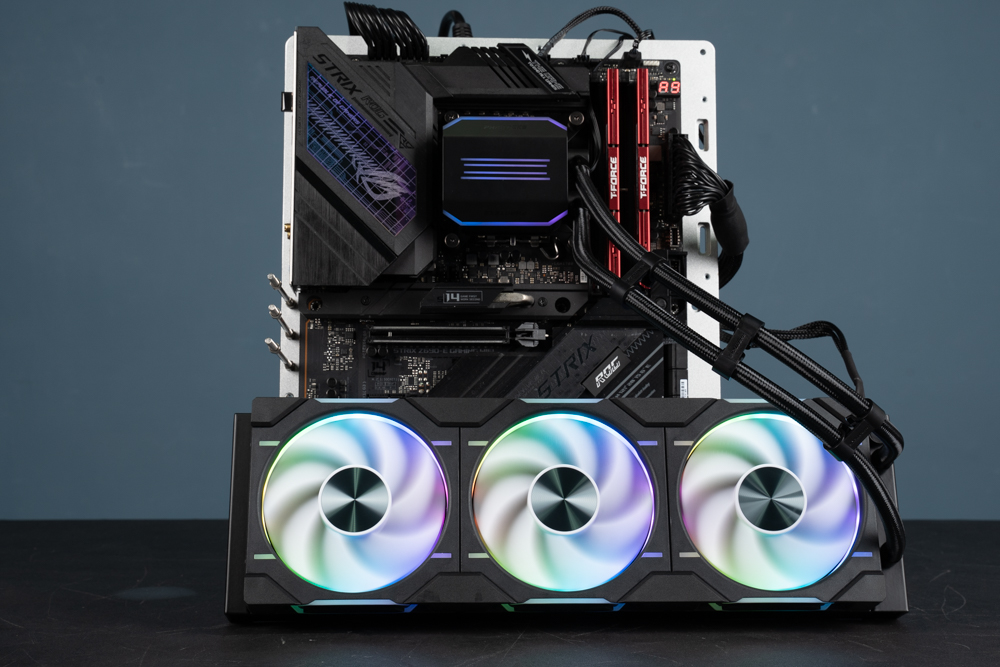
The Phanteks GLACIER ONE 360 D30 stands out primarily because of its use of the D30-120 fan, which excels in multiple aspects. Not only does it feature a quick-release bridge design that simplifies the installation process, but it also impresses in terms of lighting and overall performance. What really took the author by surprise, however, was its silent operation. While many high-efficiency water-cooling fans tend to produce noticeable noise, the D30-120 remains quiet even when running at its full speed of 2000 RPM.
In a departure from most contemporary water coolers that rely on SATA power supplies or USB 2.0 sockets, the GLACIER ONE 360 D30 only requires a connection to the motherboard’s 3-pin. For its lighting component, a specialized D-RGB 3-pin connects to the motherboard’s 5V 3-pin, making it convenient. Moreover, the lighting can be controlled using the motherboard’s lighting software, which not only simplifies the installation and usage but also eliminates potential conflicts between different lighting control software and spares the USB 2.0 socket.
In terms of pricing, the Phanteks GLACIER ONE D30 240mm comes in at NT$4790, while the 360mm variant is priced at NT$5690. This positions them in the mid-range segment of the water-cooling market. However, when considering that purchasing three separate D30-120 fans would cost NT$2790, it becomes evident that the water cooler, when viewed as a comprehensive package, offers excellent value for money and can be deemed quite reasonably priced.
If this article is helpful for you, please share this article with your friends on social media. Thank you!
This article is based on the personality of the reviews. You are responsible for fact-checking if the contents are not facts or accurate.
Title: Rapid-Detach Fan X with Advanced Integrated Water Cooling | Unboxing and Testing of Phanteks GLACIER ONE 360 D30